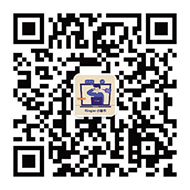The global demand for clean-label, plant-based solutions has raised herbal extracts and Traditional Chinese Medicine (TCM) extracts from simple remedies to appealing new components of modern food and beverage formulation. Both herbal extracts and TCM are thriving because they offer depth, adaptability, and credibility to today’s generation that value more nature derived solutions. For manufacturers, they are a toolkit full of alternatives to synthetic additives.
Herbal extracts are valued for their ability to deliver flavor, antioxidant activity, metabolic support, and wellness benefits in compact, stable formats. They are incorporated in ready-to-drink adaptogenic beverages, metabolic snacks, and hybrid supplements, giving consumers ‘’that healthy feeling”.
Herbal extracts are concentrated preparations derived mostly from plant leaves, flowers, roots and seeds. Their extraction methods depend on the desired compound profile: water-based decoctions are used for polysaccharides and hydrophilic compounds; alcohol-based tinctures for alkaloids and flavonoids; powdered extracts for dry blends and capsules; and essential oils for aroma and topical applications.
In contrast, TCM extracts are formulated through decoction of multiple herbs, a process that enhances pharmacological synergy and reflects centuries of empirical practice. Unlike Western herbalism, which often emphasizes isolated compounds, TCM formulations rely on the interaction of herbs boiled together to amplify therapeutic effects. According to KPC Products, decocting herbs prior to extraction ensures that their complex interactions are preserved, resulting in greater efficacy than simply blending single herb powders post-extraction.
TCM utilizes thousands of herbs, many of which are found in functional food and beverage. These extracts are categorized by their therapeutic roles in TCM, such as tonics, heat-clearing agents, blood activators, and digestion aids. The categories include:
- - Adaptogens that boost resilience and energy. from astragalus and ginseng
- - Digestive aids that support gut health (e.g., Hawthorn, Tangerine peel)
- - Detoxifiers that can clear heat and inflammation (e.g., Chrysanthemum, Honeysuckle)
- - Mood and sleep regulators that calm the spirit (e.g., Jujube, Schisandra)
- - Metabolic modulators used to regulate blood sugar and lipids (e.g., Bitter melon, Mulberry leaf)

Goji berries © Keithwilson | Dreamstime.com
Examples of Chinese herbal extracts in F&B formulation:
|
Extract Name |
Botanical Source |
Functional Role in F&B |
Example Applications |
|
Goji Berry |
Lycium barbarum |
Antioxidant, eye health |
Infused teas, granola, gummies |
|
Chrysanthemum |
Chrysanthemum morifolium |
Anti-inflammatory |
Herbal drinks, cooling beverages |
|
Ginseng |
Panax ginseng |
Energy, immunity |
RTD tonics, energy shots |
|
Hawthorn |
Crataegus pinnatifida |
Digestion, heart health |
Fruit snacks, digestive beverages |
|
Schisandra |
Schisandra chinensis |
Liver support, stress |
Adaptogenic drinks, capsules |
|
Cordyceps |
Cordyceps militaris |
Respiratory, vitality |
Functional coffee, mushroom blends |
|
Tangerine Peel |
Citrus reticulata |
Gut motility, flavor |
Soup bases, seasoning powders |
|
Mulberry Leaf |
Morus alba |
Blood sugar modulation |
Diabetic-friendly teas, smoothies |
The above-mentioned ingredients are often paired with modern carriers like collagen, plant-based milks, or prebiotic fibers to enhance bioavailability and consumer appeal.
Market overview: 2023 and beyond
The Chinese herbal extract market is projected to grow across F&B, nutraceutical, and cosmetic sectors. The global market size from USD 3.5 billion in 2023 is forecast to reach USD 7.8 billion by 2032 (Grand View Research 2023). The China-specific market will grow from USD 5.4 billion in 2023 to USD 10.2 billion by 2030, CAGR of 9.4% (Mordor Intelligence 2025).
Analysts expect the development of RTD herbal beverages with adaptogens and metabolic modulators, clean-label snacks featuring traditional botanicals, hybrid formulations combining TCM extracts with Western nutraceuticals, as well as more sustainable sourcing and traceability for herbal ingredients.
Chinese herbal extracts are said to be the bridge between tradition and innovation. But the success of products depends largely on scientific validation of health claims, sensory optimization to balance bitterness or earthiness, and regulatory compliance across markets (see SFA’s approved CMM list).
References
- Singapore Food Agency (SFA) List of Chinese Medicinal Materials (CMM) Commonly Used in Food (2023) https://www.sfa.gov.sg/docs/default-source/tools-and-resources/list-of-chinese-medicinal-materials-cmm3042e12552534dfca3da77d54f1b938b.pdf
- Grand View Research Herbal Extract Market Size, Share & Growth Report, 2030 (2023) https://www.grandviewresearch.com/industry-analysis/herbal-extract-market-report
- Mordor Intelligence Organic Herbal Extracts Market Size & Forecast (2025–2030) (2025) https://www.mordorintelligence.com/industry-reports/organic-herbal-extracts-market
- Frontiers in Nutrition Jia, Mengzhen, et al. “An Analysis of the Nutritional Effects of Schisandra chinensis Components Based on Mass Spectrometry Technology.” Frontiers in Nutrition 10 (2023) https://www.frontiersin.org/articles/10.3389/fnut.2023.1227027/full
- ECHEMI Fi Asia 2024 – Tomorrow’s Tastes Today (Event Coverage, July 8, 2024) https://www.echemi.com/cms/1964865.html
- KPC Products What Is the Difference Between Raw Herbs and Herbal Extracts in TCM? (February 8, 2019) https://kpc.com/articles/what-is-the-difference-between-raw-herbs-and-herbal-extracts-in-tcm/
- BMC. From traditional medicine to modern medicine: the importance of TCM regulatory science (TCMRS) as an emerging discipline. https://cmjournal.biomedcentral.com/articles/10.1186/s13020-025-01152-8

 iConnectHub
iConnectHub
 Login/Register
Login/Register Supplier Login
Supplier Login


























